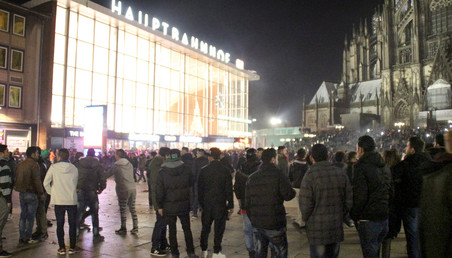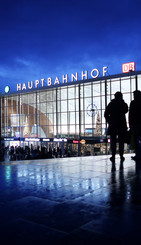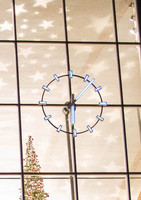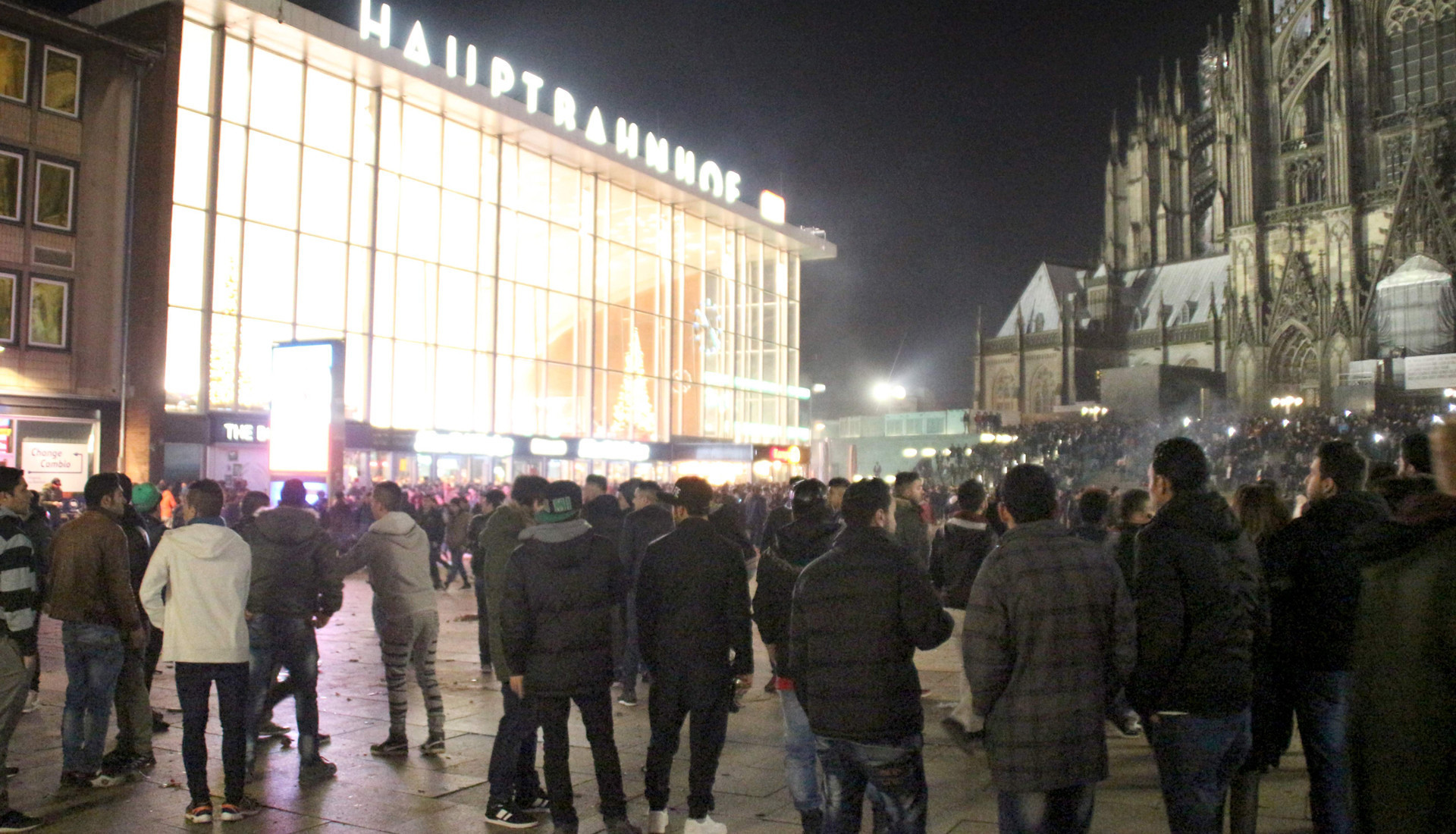After New Year’s Eve, the messages streamed in: why wasn’t “the media” talking about what had happened in Cologne?
Those asking the question generally supplied the answer themselves: the media was being overly "politically correct" and wished to avoid mentioning “an inconvenient truth.”
And most of these people were in just as little doubt about what that “inconvenient truth” was. Clearly, “refugees” had gone after “our women” en masse. A Trojan horse had breached the walls, and hordes of lecherous men had poured out of its belly. Why wouldn’t the media call it what it was?
I’ll admit it up front: writing about this subject is uncomfortable. Because no journalist wants to be blind or insensitive to either the suffering of the victims or the role of the suspects.
But refusing to talk about things? That’s not what we do.
When confronted with the events of New Year’s Eve in Cologne, we didn’t look away. Instead, we asked two journalists there to investigate what happened in as much depth as possible.
Between looking away and blabbing away lies an honest search for the truth
After the first wave of indignation over the media’s alleged Big Look Away, a second phase commenced: the Big Blab Away. Law enforcement spoke indiscreetly; politicians expressed outrage; the press reflexively reported every statement and rumor as breaking news.
Somewhere between the Big Look Away and the Big Blab Away, we figured, must lie the truth – or at least the search for it.
Someone needed to take the time to look for the truth. What happened and what didn’t? Was it organized or not? Did the reasons have to do with the influx of refugees or didn’t they? And how did things get so out of hand?
And so the week after Cologne, we sent International Editor Maaike Goslinga to find two journalists in Germany who could reconstruct the events of New Year’s Eve.
Maaike chose Katrin Ohlendorf and Yermi Bremmer.
We gave them the resources to spend four months conducting an in-depth investigation on the ground. That meant tracking down witnesses and comparing their accounts, and interviewing police and prosecutors.
Our objective wasn’t to confirm or deny the rightness of anyone’s account of events but rather to collect as many facts as possible and set them alongside the existing versions of that night.
Today, we’re publishing the results of those months of work.
Hang on – doesn’t The Correspondent aim to go beyond superficial news reporting?
Some of you may be thinking: “But The Correspondent doesn’t report incidents. It looks at underlying structures.”
And that’s true – but our manifesto also mentions another objective. It says that in our reporting, The Correspondent prioritizes relevance over recentness, looks for alternative ways of doing journalism, is transparent about its journalistic choices and dilemmas, values thorough fact-checking, and takes into account in its own reporting the ways in which the wider news media shape our perceptions of the world.


New Year’s Eve in Cologne. Photos by Markus Boehm / AFP
As our reconstruction shows, this collection of incidents – along with the reporting surrounding it – radically and structurally altered the debate on refugees in Germany and Europe. To millions of European ears, Angela Merkel’s oft-repeated statement on the refugee crisis, “Wir schaffen das” – (“We’ll handle this”) – suddenly rang hollow.
This collection of incidents – along with the reporting around it – radically and structurally altered the debate on refugees
And, as the reconstruction also shows, it’s not clear whether what happened can be reduced to an “incident.”
Brenner and Ohlendorf conclude in their reconstruction that the wrong group initially got the blame for what happened. The suspects are not Syrian war refugees, but predominantly North African immigrants.
Cologne police have known for three years that this group causes a disproportionate amount of trouble. Some 40% of North African newcomers in the city break the law during their first year in Germany, as opposed to just 0.5% of Syrians, for example.
But why run this story now?
Four months after the news broke – isn’t that a little late for a reconstruction? Or, conversely, far too soon?
As of April 13, when we published this story in Dutch, none of the suspects’ trials had begun. And when Brenner and Ohlendorf asked police, politicians, and members of the press how they looked back on those first heated weeks of 2016, almost all of them said it was too early to say.
Still, publishing four months after the fact seems like a good idea. The memories of those who witnessed the events of New Year’s Eve will fade. The window of time for making a reliable reconstruction is limited.
The results of our investigation
Our reconstruction reveals numerous conflicting testimonies. That’s no surprise: the essence of a chaotic situation is that it’s hard to get a handle on. Witnesses don’t have a coherent picture, and neither do police.
One important finding of our investigation is that having three different police forces active in the same area didn’t facilitate coordination between them. And actions like the sudden closure of one station platform fueled the chaos considerably.
It’s easy to accuse our reconstruction of raising more questions than it answers. And that’s partly true. The piece isn’t a reconstruction of the undiluted truth, just the best cross-section we could put together.
Let’s face it: if you opt for slow nuance over quick judgment nowadays, you have some explaining to do.
So, for instance, while it hasn’t been proven that “organized crime” took place, nor can it be ruled out. Similarly, though there are abundant indications that crimes also took place in other European cities, it’s difficult to demonstrate a link with Cologne.
Reading this reconstruction, then, is a bit like watching Making a Murderer. You learn a lot, but answering the big questions remains a matter for speculation.
Finally, this project entails an inherent awkwardness that shouldn’t go unmentioned. Let’s face it: if you opt for slow nuance over quick judgment nowadays, you have some explaining to do. So here it is.

New Year’s Eve in Cologne. Photo by Markus Boehm / AFP
Opting for slow nuance over quick judgment does not, of course, mean we wish to in any way play down the seriousness of what was done to the victims that night.
In fact, the outrage that victim Kirsten expresses with such dignity in our reconstruction may do more justice to the victims’ suffering than any dramatic headline ever could.
If journalism is the first version of history, then the main players in this history – suspects and victims alike – deserve closer attention than media outlets are able to give them as news like this is breaking.
So yes, something needs clearing up in Cologne. Badly. And the whole world is watching.
The exact causes of the events of New Year’s Eve may remain hazy forever. Still, we hope this series dispels at least some of the fog.
— Translated from Dutch by Laura Martz and Erica Moore
 Time for the facts. What do we know about Cologne four months later?
Young male refugees quickly got blamed for a rash of sexual assaults in Cologne. But what really happened last New Year's Eve? In this reconstruction, we place the facts alongside the media narrative. How do victims, witnesses, the police, and the press look back on that night and its aftermath?
Time for the facts. What do we know about Cologne four months later?
Young male refugees quickly got blamed for a rash of sexual assaults in Cologne. But what really happened last New Year's Eve? In this reconstruction, we place the facts alongside the media narrative. How do victims, witnesses, the police, and the press look back on that night and its aftermath?
 Minute by minute. This is what happened in Cologne on New Year’s Eve
To get a better idea of what happened outside Cologne’s main train station last New Year's Eve, we’ve put together a timeline based on official reports about that night.
Minute by minute. This is what happened in Cologne on New Year’s Eve
To get a better idea of what happened outside Cologne’s main train station last New Year's Eve, we’ve put together a timeline based on official reports about that night.
 News after the fact. Reporting on New Year’s Eve in Cologne, with hindsight
The events of New Year's Eve in Cologne, Germany, have long since disappeared from the headlines, but the police investigation continues. What would a news report of that night look like in light of what we know now – four months later?
News after the fact. Reporting on New Year’s Eve in Cologne, with hindsight
The events of New Year's Eve in Cologne, Germany, have long since disappeared from the headlines, but the police investigation continues. What would a news report of that night look like in light of what we know now – four months later?



